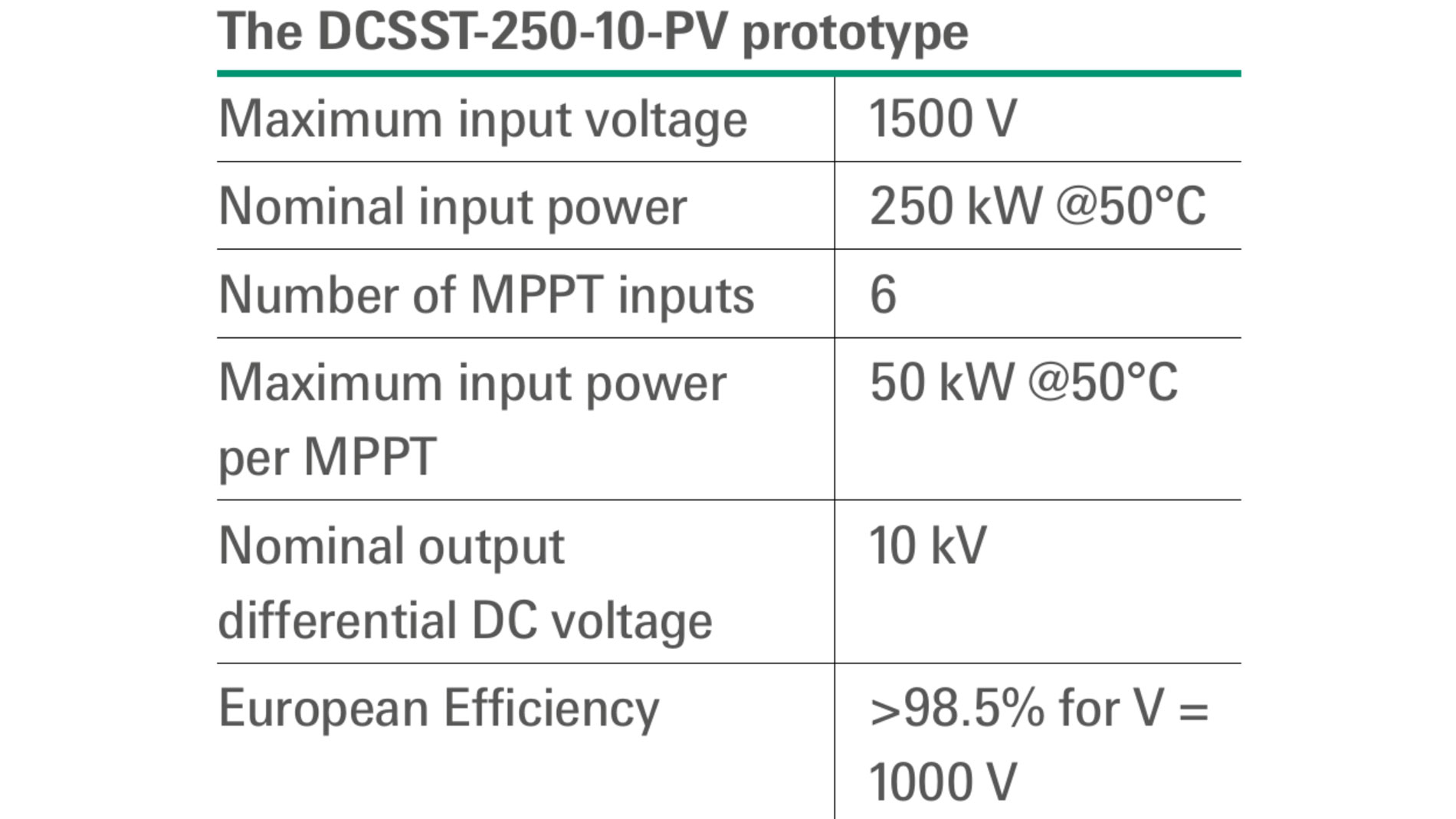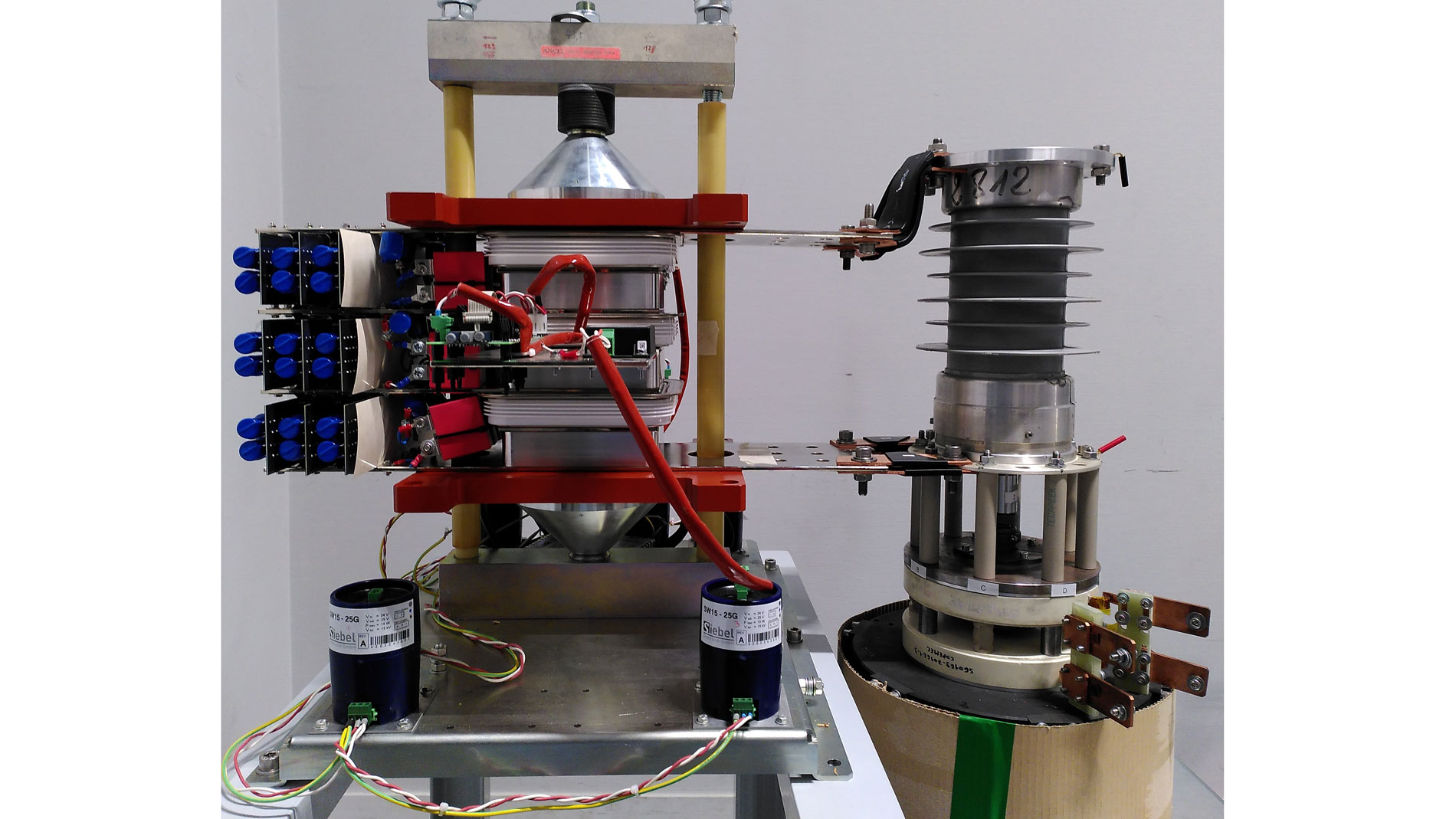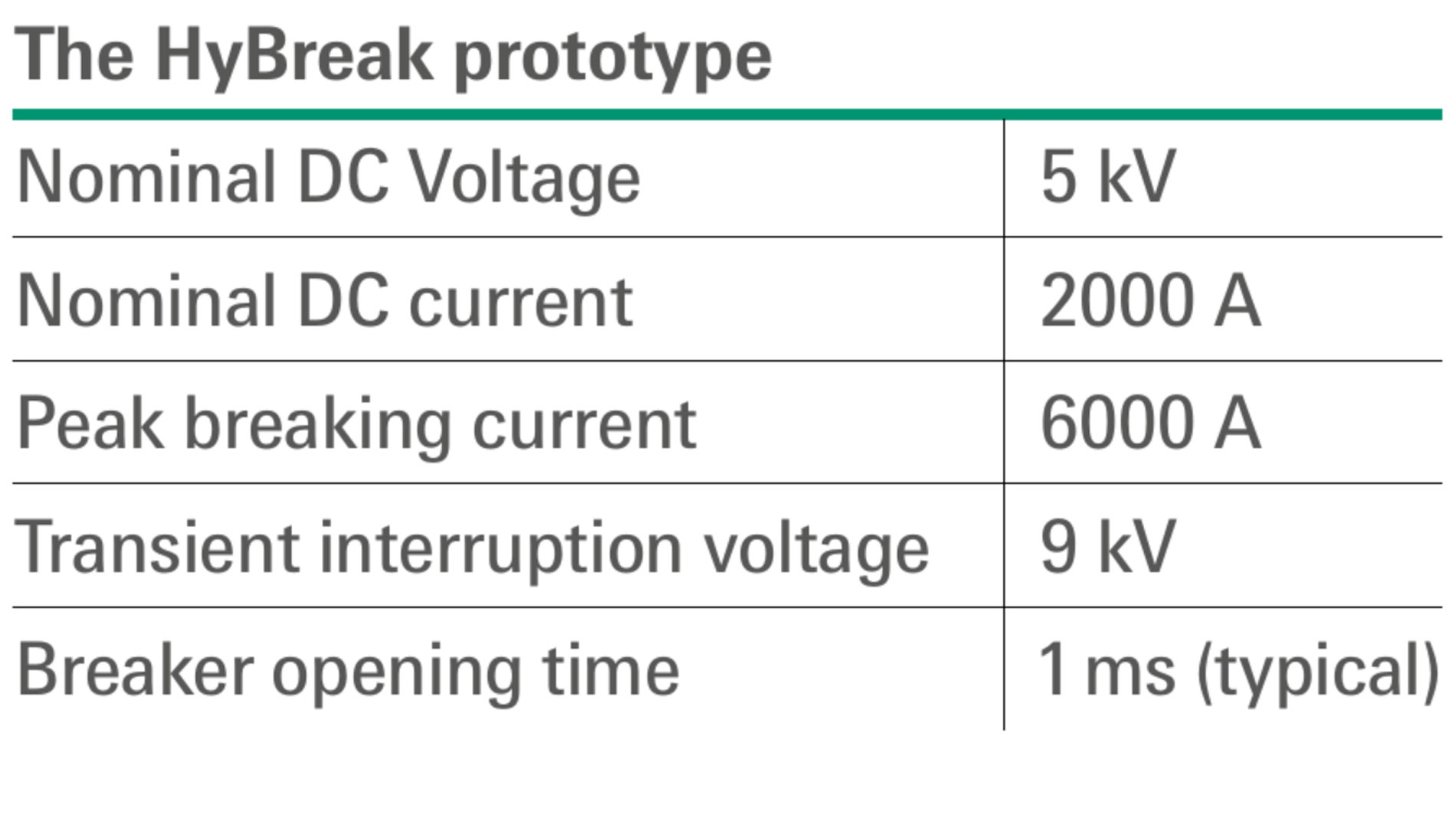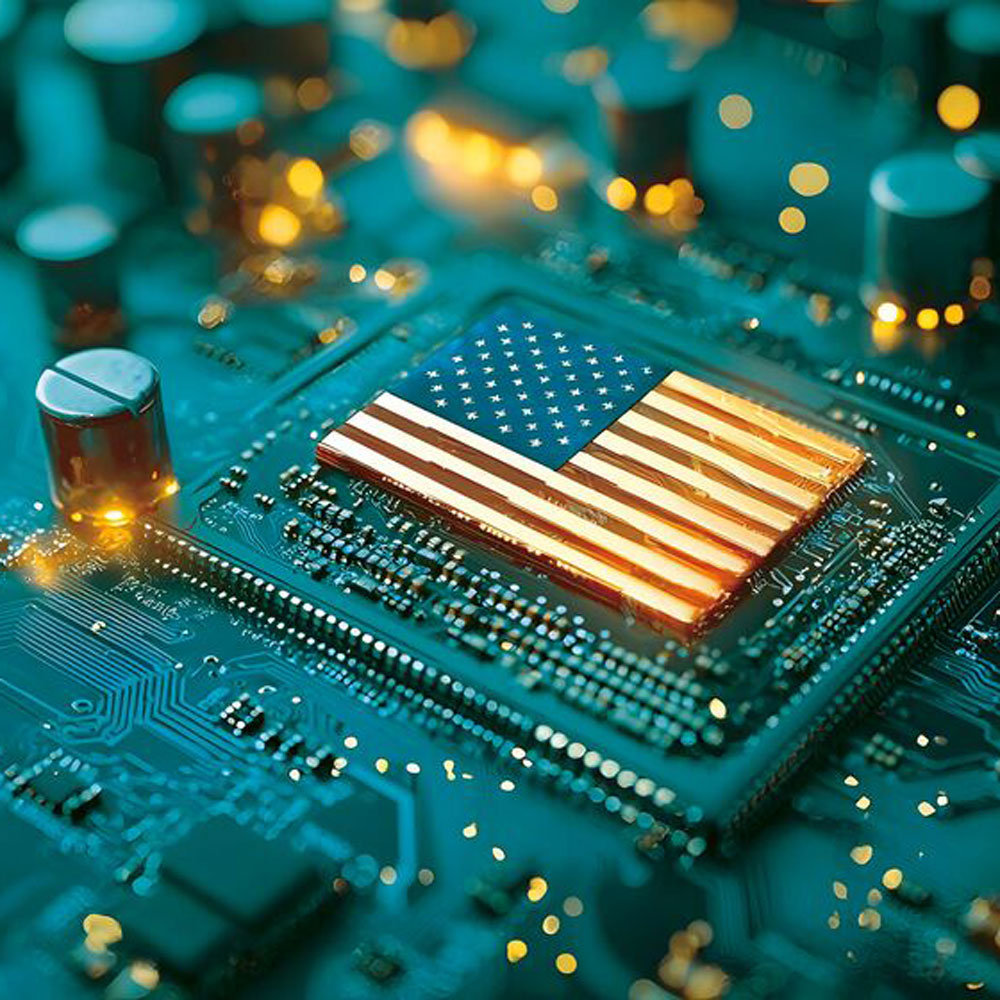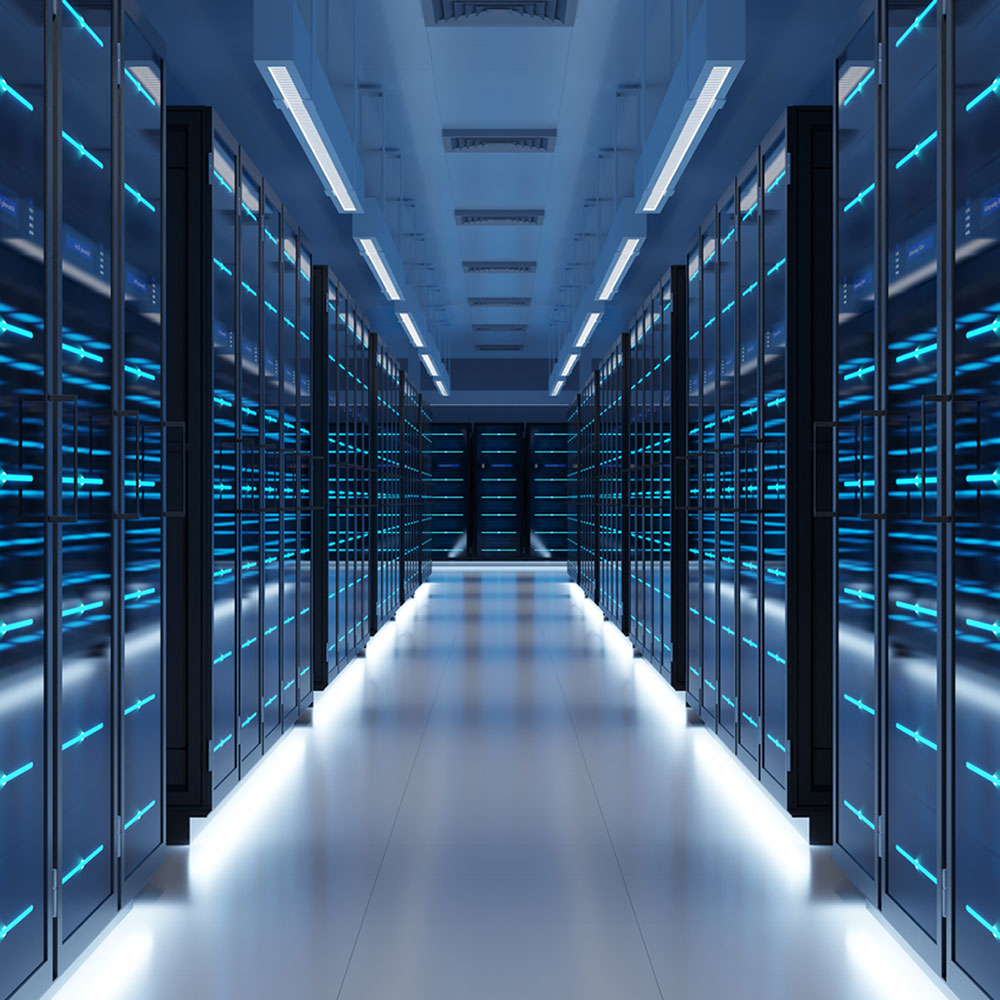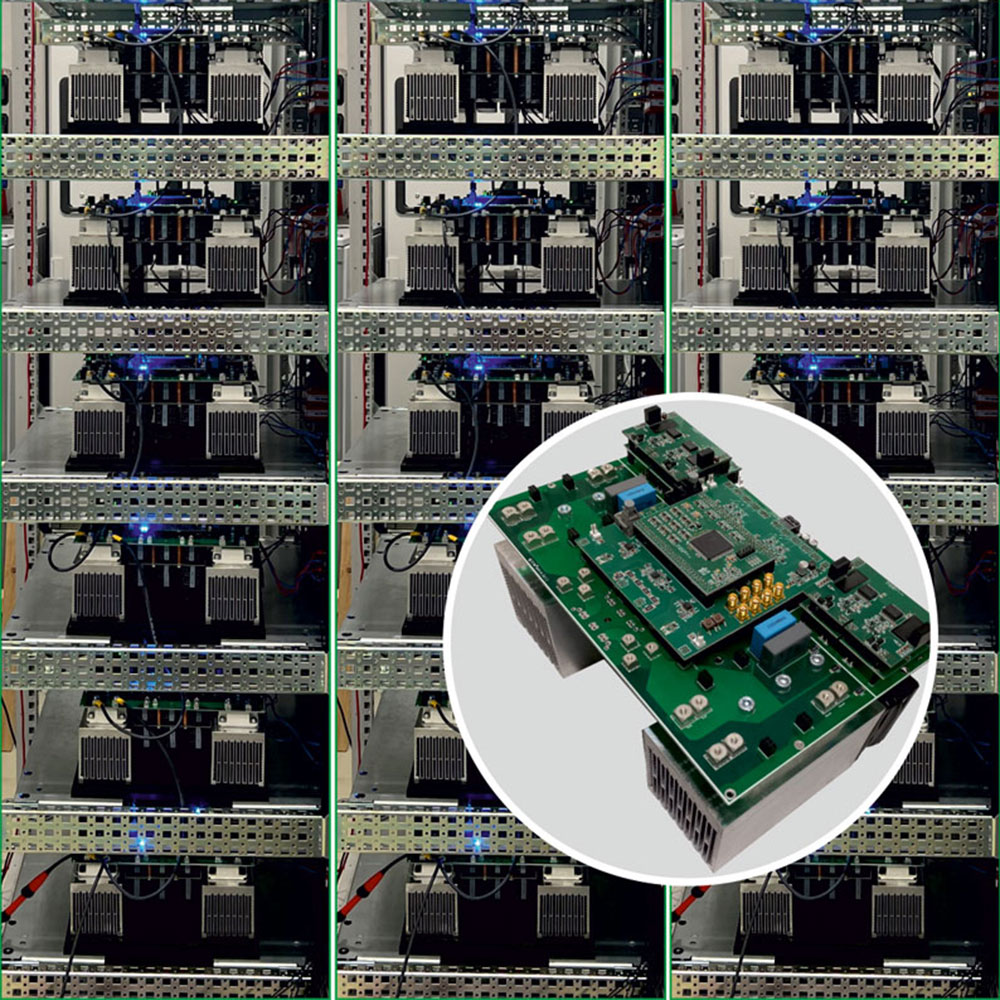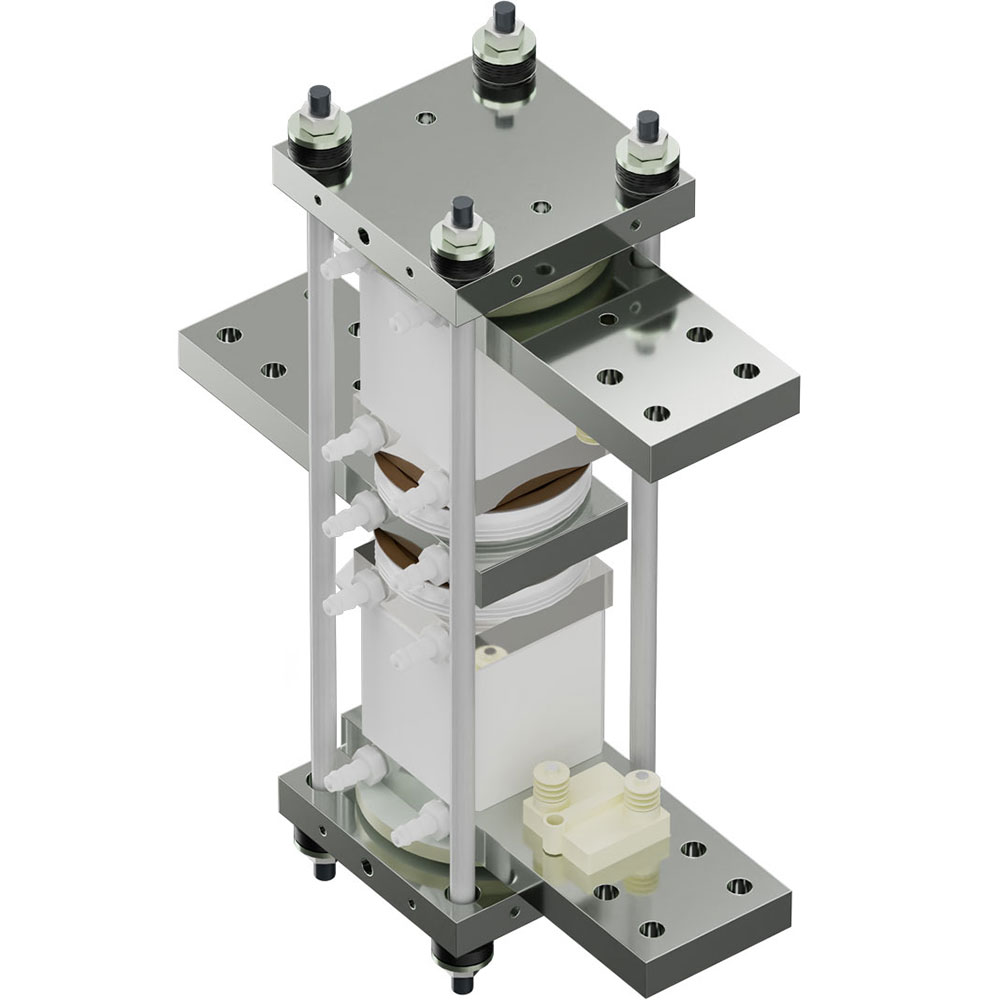Solving these issues could have benefits for enhancing and modernizing power distributionii: Apart from being better suited to long-dis-tance underwater and underground use than AC, MVDC technology can solve many of the challenges of distribution and the impacts of distributed energy resources on the network.
Development of MVDC technologies
As an independent innovation and research company, one of the objectives of the SuperGrid Institute is to increase the maturity of power electronics technologies for future power grids. SuperGrid Institute also develops protection and control solutions. Among recent develop-ments are a hybrid DC circuit breaker and a DC solid-state transformer (DCSST) for MVDC ap-plications. These are currently under functional test, with demonstrations expected soon.
The DC circuit breaker, the HyBreak, has been developed to support the use of MVDC networks in grid, mobility and industrial applications. It uses SuperGrid Institute Hy-Break technology, a hybrid of both solid-state breaking, using IGBT semiconductors, and me-chanical breaking, using a vacuum interrupter with an ultra-fast actuator. The result is an ex-cellent compromise between on-state losses, mechanical endurance, and breaking speed.
The DCSST has been developed specifically for connecting photo-voltaic (PV) low voltage DC networks to an MVDC collection system. To address the specific needs of this application, the design is a monolithic, unidirectional DC/ DC converter, integrated with maximum power point tracking (MPPT) technologyiii. Galvanic insulation is ensured by a transformer operating at a frequency of a few kHz and enclosed in an oil tank for compact insulation.
MVDC networks are becoming a reality for PV applications
Developing MVDC technologies is one of the goals of the OPHELIAiv project, in France. This addresses the limited availability of land for new PV installations by enabling dual purpose approaches that can be deployed on long, narrow land surfaces, with collector networks often stretching well over 10 km, for example, running beside dikes, roads, and railways.
In this context MVDC become the technology of choice, especially when the plant sites are also far away from the connection to the grid. As part of the OPHELIA project – as well as medium frequency developing a dedicated DCSST – the SuperGrid Institute contributes with expertise on system design, and provides testing facilities and expertise for validating MVDC cables, switch-gear, and other components. By 2026, the project aims to install a demon-strator along the “ViaRhôna” cycling route along the river Rhône, to validate the technological developments.
i https://www.pv-magazine.com/2022/12/19/europe-added-41-4-gw-of-new-solar-in-2022/
ii As identified by CIGRE https://electra.cigre.org/309-april-2020/technical-brochures/medium-voltage-direct-current-mvdc-grid-feasibility-study.html:
iii https://ieeexplore.ieee.org/document/10173142
iv Ophelia is an innovative R&D project comprising, and involving CNR (the project coordinator), Nexans, Schneider Electric, SNCF, and the SuperGrid Institute (https://www.supergrid-institute.com/fr/2023/08/31/news-official-launch-of-the-ophelia-project-a-solar-canopy-demonstrator-along-the-viarhona/).


